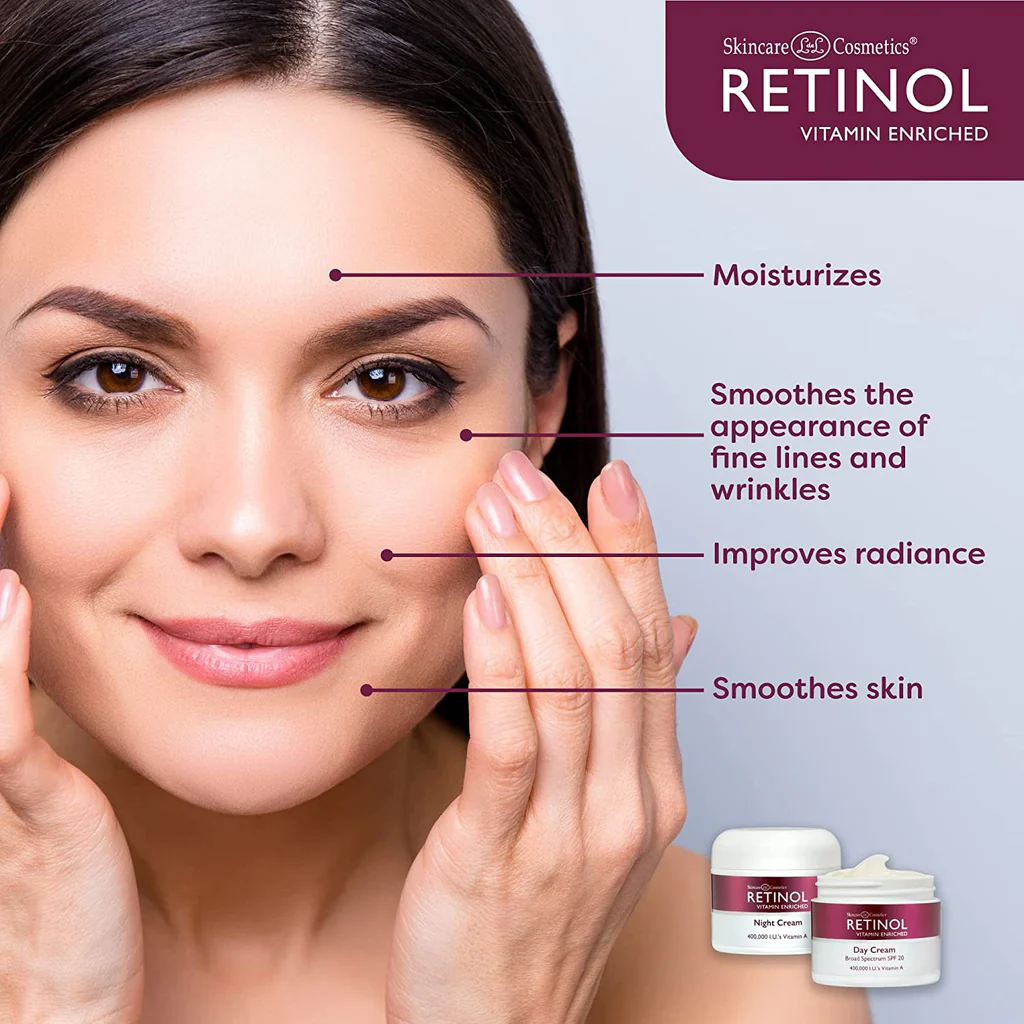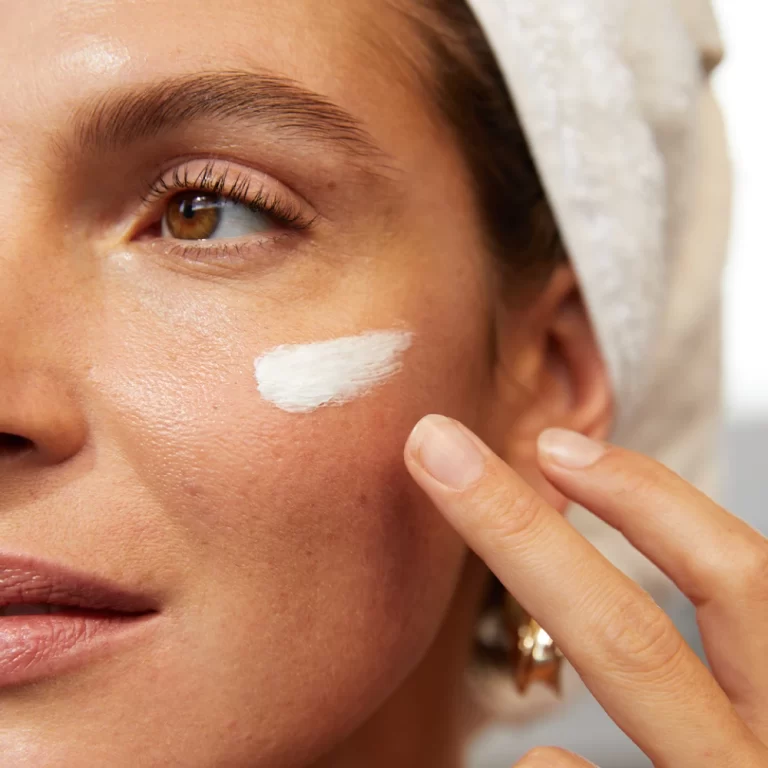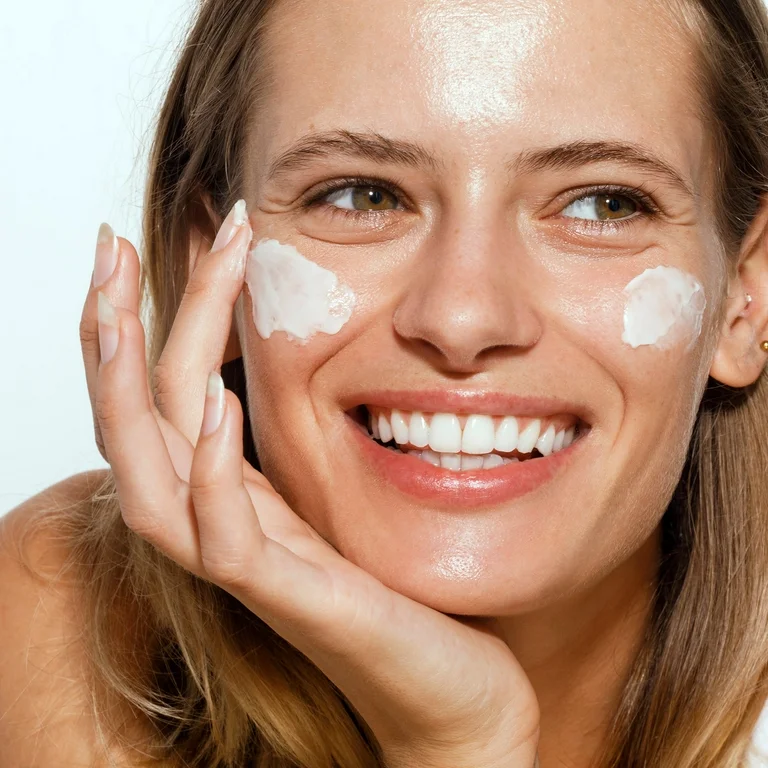
Face Cream with Retinol :Revolutionizing Skincare
Understanding Retinol: The Skincare Superhero
Retinol has taken the skincare world by storm. This powerful ingredient, derived from Vitamin A, offers numerous benefits for the skin. Retinol works by increasing cell turnover and stimulating collagen production. As a result, it helps reduce fine lines, wrinkles, and acne. Moreover, retinol improves skin texture and tone, giving users a more youthful appearance. Many dermatologists consider retinol the gold standard in anti-aging skincare. Its effectiveness has been proven through countless studies and real-world results. However, face cream with retinol requires careful use and understanding to maximize its benefits while minimizing potential side effects.
The Science Behind Retinol’s Effectiveness
Retinol’s effectiveness stems from its ability to penetrate deep into the skin. Once absorbed, it converts to retinoic acid, which interacts with skin cells at a molecular level. This interaction triggers a cascade of positive changes in the skin. Firstly, retinol accelerates the natural exfoliation process, removing dead skin cells more quickly. Secondly, it boosts collagen and elastin production, which are essential for maintaining skin elasticity and firmness. Additionally, retinol increases hyaluronic acid production, helping to keep the skin hydrated and plump. These combined effects result in smoother, clearer, and more youthful-looking skin. Furthermore, retinol has been shown to regulate sebum production, making it an effective treatment for acne-prone skin.

Choosing the Right Retinol Face Cream
Selecting the right face cream with retinol can seem daunting given the multitude of options available. Several factors should be considered when making a choice. Firstly, consider the concentration of retinol in the product. Beginners should start with lower concentrations (0.01% to 0.03%) and gradually work their way up. More experienced users may opt for higher concentrations (0.1% to 1%). Secondly, look at the formulation of the cream. Some products combine retinol with moisturizing ingredients to minimize irritation. Others may include additional active ingredients that complement retinol’s effects. The packaging is also crucial, as retinol can degrade when exposed to light and air. Opt for opaque, airless pumps to ensure the product remains stable. Lastly, consider your skin type and specific concerns when choosing a retinol cream.
Incorporating Retinol into Your Skincare Routine
Introducing retinol into a skincare routine requires patience and careful planning. Start by using the product once or twice a week, allowing your skin to acclimate. Gradually increase frequency as your skin builds tolerance. Apply retinol at night, as it can increase skin sensitivity to sunlight. Always follow up with a good moisturizer to combat potential dryness. In the morning, be sure to use a broad-spectrum sunscreen with at least SPF 30. This step is crucial as retinol can make skin more susceptible to sun damage. When using other active ingredients like vitamin C or alpha-hydroxy acids, alternate them with retinol rather than using them simultaneously. This approach helps prevent irritation and ensures each ingredient works effectively.

Managing Expectations and Side Effects
While retinol offers impressive benefits, it’s important to manage expectations. Results don’t appear overnight. Most users start seeing improvements after 4-6 weeks of consistent use. Significant changes in skin texture and appearance may take 3-6 months. During the initial weeks of use, some side effects may occur. These can include dryness, redness, peeling, and increased sensitivity. These effects, often referred to as “retinization,” are usually temporary. They indicate that the skin is adjusting to the retinol. To minimize these side effects, start with a lower concentration and use the product less frequently. If irritation persists, consult a dermatologist. They can provide guidance on proper use and may recommend alternative formulations if needed.
Retinol vs. Other Skincare Ingredients
Face cream with retinol stands out among skincare ingredients due to its versatility and proven effectiveness. However, it’s not the only player in the anti-aging game. Other popular ingredients include vitamin C, hyaluronic acid, and peptides. Vitamin C is an antioxidant that brightens skin and protects against free radical damage. Hyaluronic acid hydrates and plumps the skin. Peptides stimulate collagen production. While these ingredients offer benefits, retinol remains unique in its ability to address multiple skin concerns simultaneously. It tackles fine lines, wrinkles, acne, and uneven skin tone all at once. Some skincare products combine retinol with these other ingredients for enhanced results. However, it’s essential to introduce new ingredients gradually to avoid overwhelming the skin.

Retinol for Different Skin Types
Retinol can benefit various skin types, but the approach may differ. For oily and acne-prone skin, retinol can help regulate sebum production and unclog pores. These individuals may tolerate higher concentrations of retinol more easily. Dry or sensitive skin types should start with lower concentrations and use retinol less frequently. They may benefit from retinol products that incorporate hydrating ingredients. Combination skin types might need to adjust application based on different areas of the face. Those with mature skin often see significant improvements in fine lines and wrinkles with consistent retinol use. Regardless of skin type, it’s crucial to listen to your skin and adjust usage accordingly. If irritation occurs, reduce frequency or concentration until the skin adapts.
Common Myths About Retinol Debunked
Despite its popularity, several myths surround retinol use. One common misconception is that retinol thins the skin. In reality, retinol thickens the dermis, the deeper layer of skin, by stimulating collagen production. Another myth suggests that retinol exfoliates the skin. While retinol increases cell turnover, it’s not an exfoliant in the traditional sense. Some believe retinol can’t be used around the eyes, but specially formulated eye creams with retinol exist. There’s also a myth that retinol can’t be used in summer. While sun protection is crucial, retinol can be used year-round with proper precautions. Lastly, the belief that higher percentages always yield better results is misguided. The best concentration depends on individual skin tolerance and needs.
The Future of Retinol in Skincare
As skincare technology advances, the future of retinol looks promising. Researchers are developing new delivery systems to enhance retinol’s stability and effectiveness. Time-release formulations are emerging, allowing for a steady supply of retinol throughout the night. This approach may increase efficacy while reducing irritation. Additionally, scientists are exploring retinol alternatives, such as bakuchiol, for those who can’t tolerate traditional retinol. These “retin-alts” aim to provide similar benefits with fewer side effects. Moreover, the combination of retinol with other cutting-edge ingredients is an area of ongoing research. These innovations may lead to even more potent anti-aging formulations in the future.

Conclusion: Embracing Retinol for Radiant Skin
Retinol has earned its place as a staple in skincare routines worldwide. Its ability to address multiple skin concerns makes it a versatile and valuable ingredient. While incorporating retinol requires some patience and care, the results can be transformative. Clear, smooth, and youthful-looking skin is achievable with consistent use of retinol face creams. As with any skincare product, individual results may vary. It’s essential to choose products suited to your skin type and concerns. Consulting with a dermatologist can provide personalized guidance on incorporating retinol into your routine. With proper use and realistic expectations, retinol can help you achieve the radiant, healthy skin you desire.
Moreover, transitioning to a retinol-infused cream may require some patience. Initially, you might experience mild irritation or dryness, but this should subside as your skin adjusts to the active ingredient. Therefore, start with a lower concentration and gradually increase it to avoid overwhelming your skin.
Furthermore, pairing your retinol cream with a robust moisturizer can effectively mitigate any dryness or flakiness. This combination helps ensure your skin remains hydrated while reaping the benefits of retinol. Additionally, don’t forget the importance of sunscreen—retinol can make your skin more sensitive to UV rays, so protecting it is crucial for maintaining those hard-earned results.Finally, consult with a dermatologist if you’re uncertain about how to introduce retinol into your regimen. They can guide you through the process and recommend the best products for your unique skin needs.

